Banteay Srei was very neat. The towers are quite a bit smaller than most other temples, but the bas-relief designs are all over, essentially covering everything. They are very detailed and still well preserved. This one also has the first 'monkey guard' statues that we've seen.
After, we headed to Ta Som, Neak Prahn and Preah Kahn. Again, all very neat. Preag Kahn is pretty big and has a few trees growing on the walls and buildings, though not even close to as extensively as Ta Prohm.
On our way back to the hotel we drove by Ankor Wat and through Ankor Thom. In Ankor Thom, there are some locals with monkeys. The driver stopped, so we did buy a bag of bananas and fed the monkeys. They were climbing all over the tuk-tuk. One even jumped up on Joe's shoulder, which was amusing. I tried to use a banana to lure it off, but instead it just took it and munched on it while sitting there.
We took a day off today, but we plan on spending tomorrow seeing Ankor Wat and exploring the temples and sights of Ankor Thom, which was the ancient capital city. The little we saw in there while driving through was spectacular. It should be an interesting day tomorrow.
-Miranda
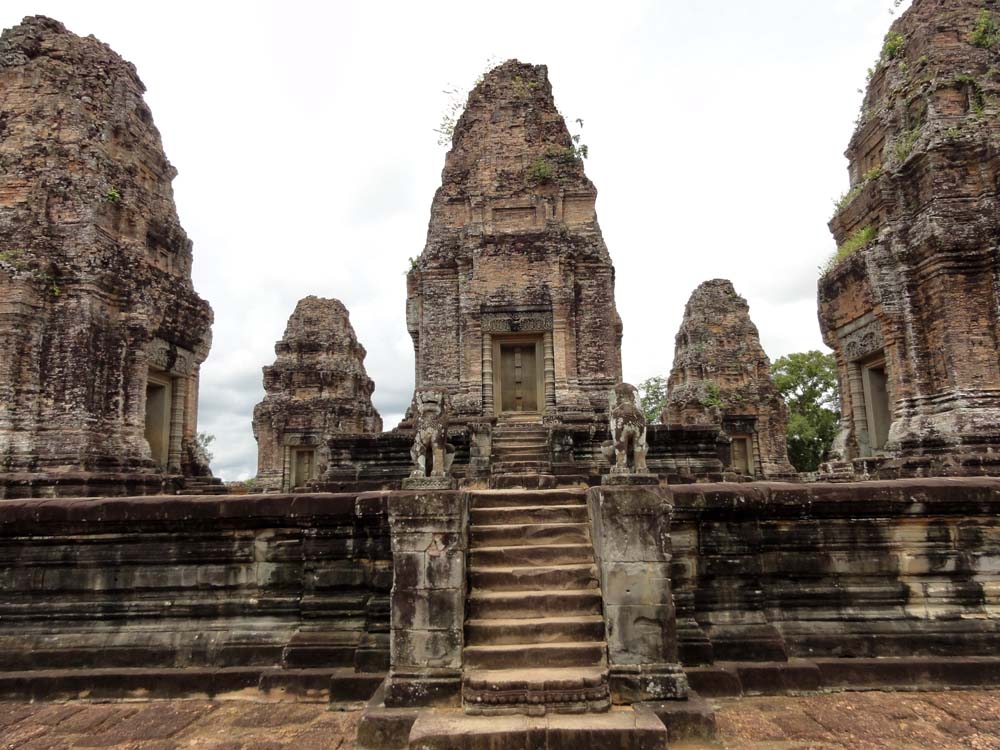
The towers of Pre Rup. (Click on photo to enlarge.)
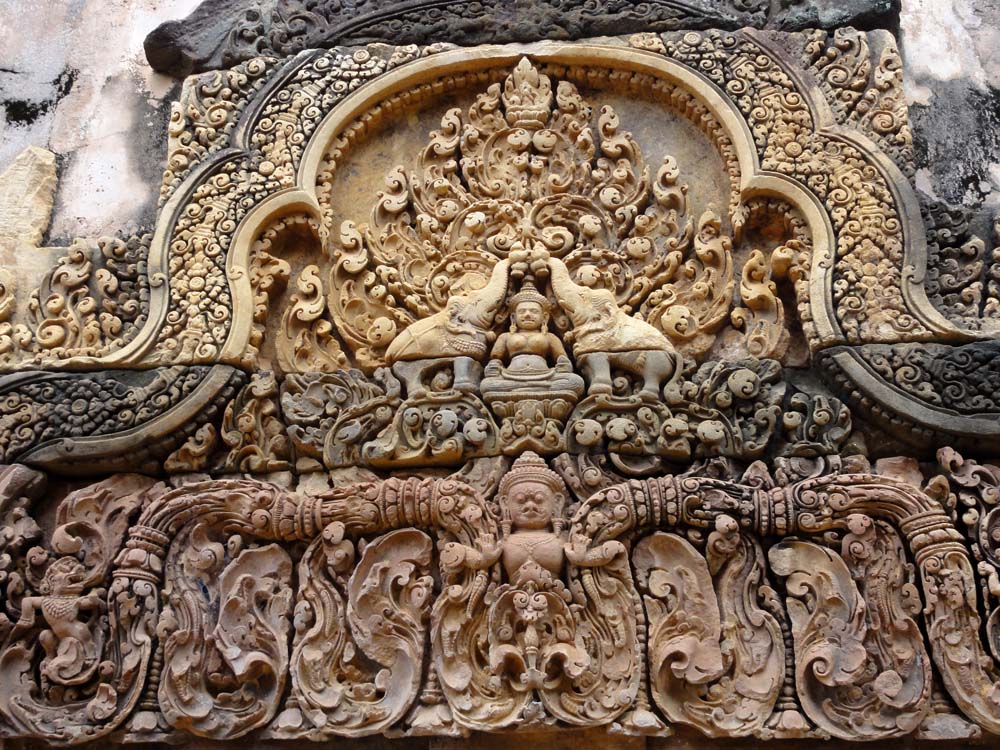
A very detailed bas-relief at Banteay Srei. (Click on photo to enlarge.)
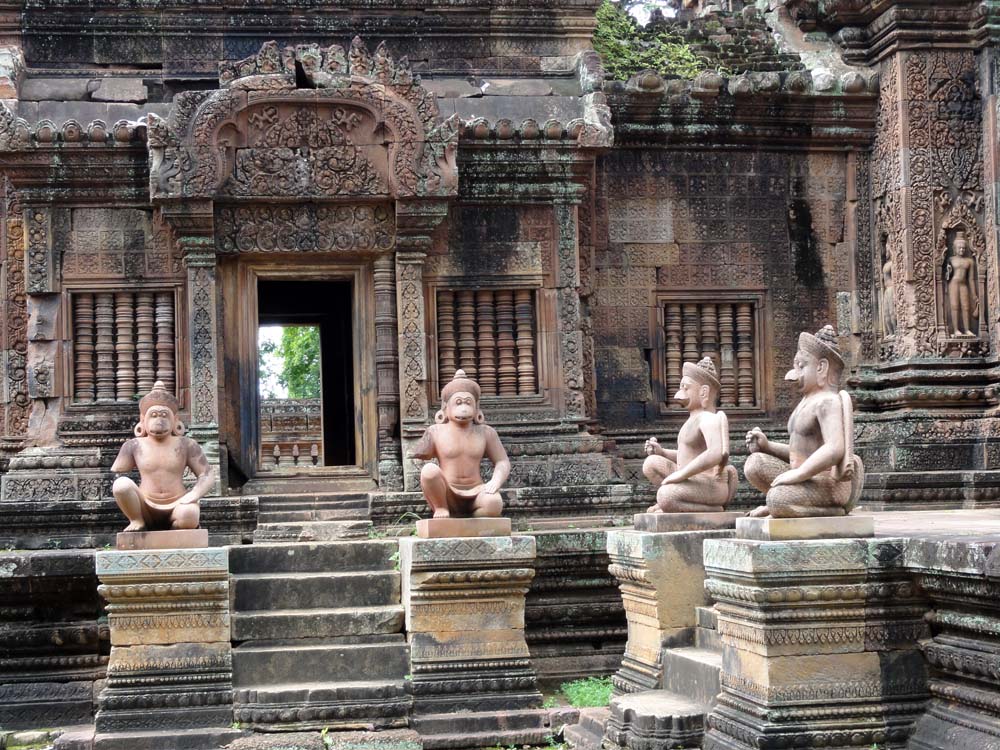
The 'monkey guards'. (Click on photo to enlarge.)
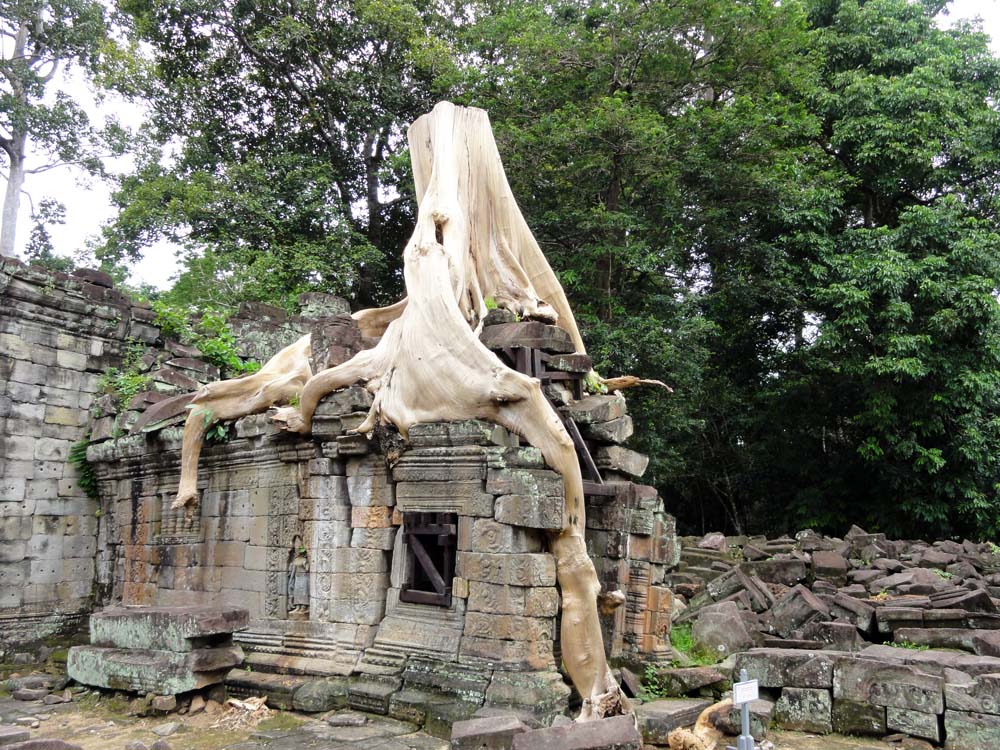
An old dead stump on a building at Preah Kahn. (Click on photo to enlarge.)
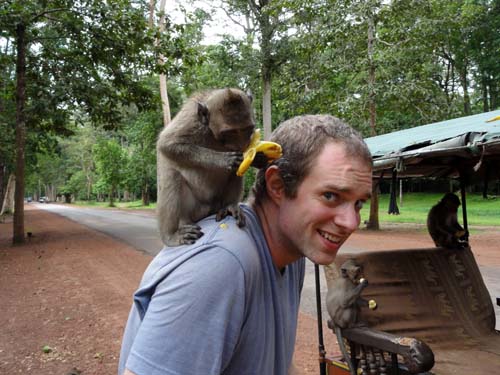
Joe with a monkey.
[ 3 comments ] ( 18 views )
We left Phnom Penh and took the bus for about 6 hours to Siem Reap. One we found a hotel we did some research to decide where to go and what to do. The next day began our first day of visiting temples.
There are a few different ways to get around, but we chose tuk-tuk. Basically you find a tuk-tuk driver and use him for your entire trip. You just pay a set price (agreed upon before starting) for what you plan to do on that day. You also have to buy a pass to see the temples. Cambodians don't have to, just foreigners, which is hopefully going to help protect and restore the temples.
All the temples were built during the Angkor period, which was the 9th to 13th centuries. For our first day we six temples; Lolei, Preah Ko, Bakong (previous three are part of the Roluos Group), Ta Prohm, Banteay and Prasat Kravan. The temples in the Roluos Group were relatively small, but pretty interesting. Ta Prohm has a number of trees growing on top of the walls and buildings, giving it a bit of an 'Indiana Jones/Tomb Raider' look. This is a large and pretty popular temple. Banteay Kdei was similar, just a little smaller.
It was a bit hot, especially when the sun was out, but the temples were amazing, especially the carvings and bas-reliefs that are left. You could spend hours just wandering and checking examining those. So many are different, especially over each of the doors on the towers.
Our favorite of the first day was probably Ta Prohm, though all were awe inspiring.
-Miranda
A link to a map of the temples if you're curious.
http://www.palmasplace.com/images/maptemples.jpg

Preah Ko. Lions guard most entrances and stairways in the temples.
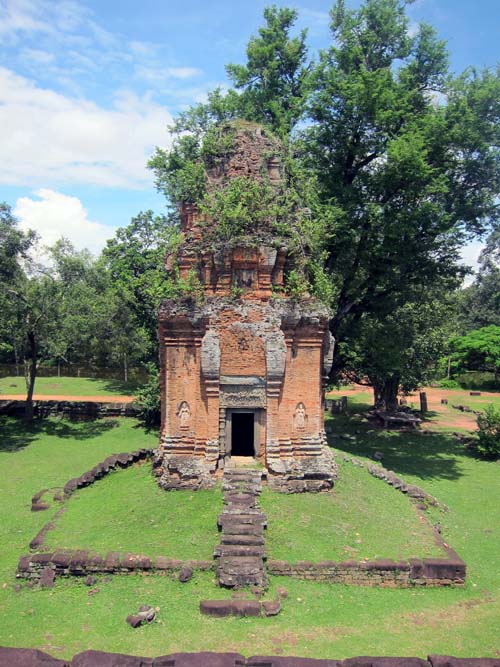
Bakong. This is a brick tower.
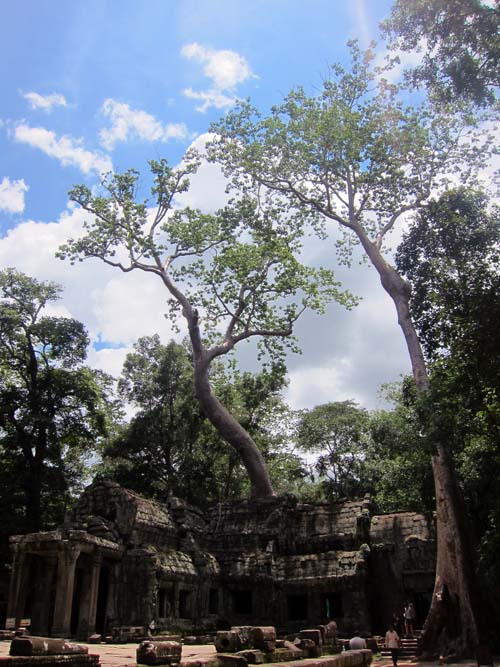
One entrance of Ta Prohm.
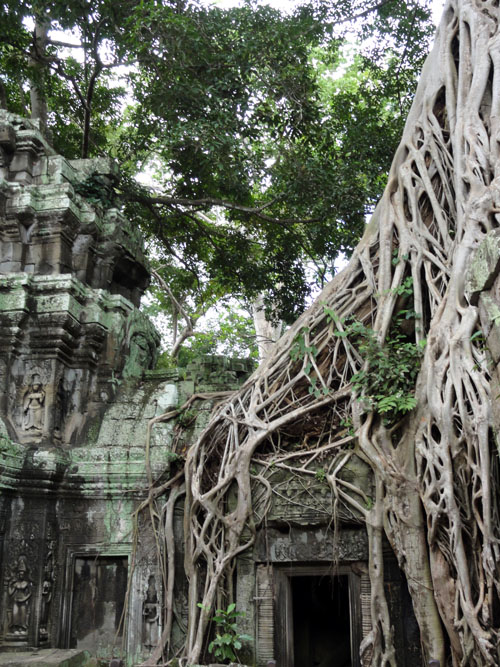
Ta Prohm
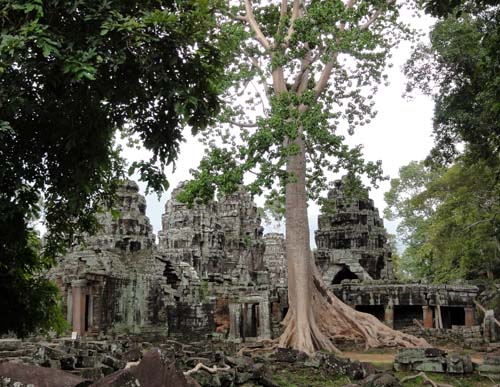
Banteay Kdei
[ 59 comments ] ( 122 views )
In April of 1975 the Khmer Rouge defeated the Lon Nol Government and took over the capital city of Phnom Penh. People were immediately forced to abandon their homes and walk for days to other villages where they were to live and work. Many atrocities happened during the 4 years the Khmer Rouge controlled Cambodia. Labor camps were formed where people had to work from sunrise to sunset digging trenches or planting rice. The Khmer Rouge also systematically killed anyone they deemed a threat to their government. This included officers of the former government, foreigners and intellectuals, people that could speak a foreign language, were formerly teachers, doctors, etc. They even killed people that wore glasses.
Tuol Sleng (S21) used to be a school, but since all schools were closed, it was turned into a prison. The Khmer Rouge brought prisoners here they wanted to interrogate. Interrogation involved a number of forms of torture. They also kept meticulous records, including photos of every prisoner and even photos of the tortured. The space has now become a museum which was horrific to walk through. Some rooms just had photos of all the prisoners. One building showed where prisoners were kept in small skinny rooms. Some of the buildings didn't have separate 'cells'. One room could be crowded with 30-40 people simply lying on the floor. These buildings also had barbed wire over the walkway/balcony area in order to prevent prisoners from trying to commit suicide.
Once the interrogation was done, most of the prisoners were stuffed into a truck and shipped 14km outside of town to Choeung Ek, now known as "The Killing Fields". Officers, men, women, children and babies were all killed here. Many by simply beatings because they didn't want to "waste precious bullets". Mass graves were found, the largest containing 450 bodies. One just had women and children in it.
In 1989 a memorial stupa was built for those killed. It has 17 tiers and contained the bones and ragged clothes from those found in the mass graves. How many people were killed by the Khmer Rouge is up for debate, but most numbers we saw mentioned almost 2 million.
The day was very sobering. Especially since there are still so many people alive that survived it or were greatly affected by what happened.
Sorry for the depressing blog post, but I felt it important to mention the history. It was something I was relatively ignorant of before this trip.
-Miranda

One room that contained wood cells.

View through the barbed wire to other buildings at S21.

The memorial stupa used to house the bones.
[ 11 comments ] ( 43 views )
We took a 9am bus heading to Phnom Penh so we would get there with enough time to find a place to stay. We made to within 30km of the city when the bus pulled over and stopped. After about half an hour of messing with it, the bus driver finally got it started again and off we went. We were in the city when it died again... Once he got it started, he drove another 5 minutes and reached a bus maintenance area. We waited for them to fuel it and mess with more stuff before we finally piled back on the bus where it took us to the Central Market. We found a pretty fancy hotel not far from there to stay in. The area is pretty chaotic, but it's quiet in the room, which is what matters.
Today we walked to the Grand Palace to be told by every single tuk-tuk driver "Grand Palace not open. Opens at 2 o'clock. You want to go to killing fields?" Saying 'no' to them barely dissuades, so, needless to say, it got a bit old. We did find some place to kill some time though. There was a national museum that was interesting and we had lunch at a Mediterranean place that was very good.
The Grand Palace was pretty impressive. The Silver Pagoda is a temple that has silver tiles on the floor (most of which are now covered with a carpet to prevent people from walking on them) and a Buddha that has 2000 diamonds on it. No photos were allowed inside though.
-Miranda
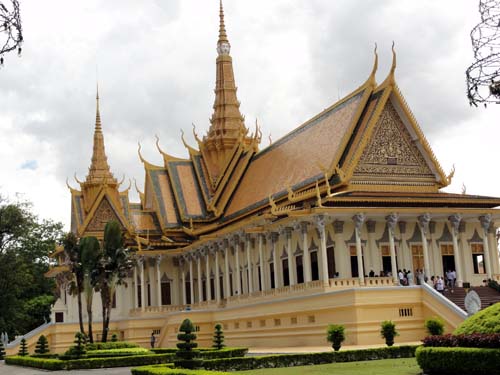
The Grand Palace.
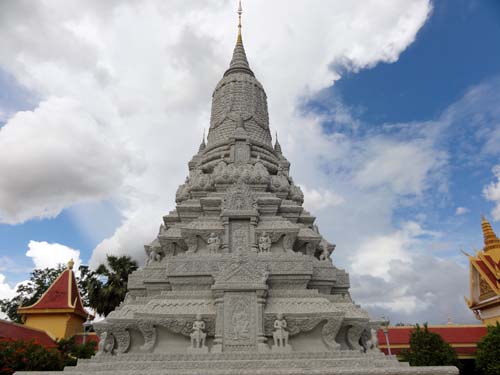
Neat thing that I don't know the name of.
[ 1 comment ] ( 3 views )
Turns out there was a bowling alley in Pakse. Joe was all excited to check it out, so we did. They had bowling shoes and everything. Haha. The screens even did the little video shorts for strikes and spares and such. So funny. Anyway, we left Pakse the next morning and headed for the 4000 islands area. We picked the island of Don Det to spend some time on. It was pretty small. It reminded me a little of the Gilis in Indonesia, but definitely less busy. Also, scooters were on the island and would just come zipping by you once in a while. We walked around quite a bit, one of the days we walked to the southern part which took an hour.
When we arrived on the island, the river was definitely high. When we left, it had risen quite a bit more. Definitely interesting to see the difference over just two nights.
We left after two nights on the island to head into Cambodia. The bus company we used had us fill out the forms for the visa and arrival before getting on the bus, then we paid them and gave them our passports. Once we arrived at the border, everyone piled out of the bus, we walked across the border and waited there for the bus and the guy with our passports. Sort of weird, but then an immigration officer did come on the bus to compare our passports with us, which was a little more reassuring.
We arrived in Kratie in the afternoon and found a place to stay without too much trouble. While Joe walked around to figure out the town and possible places to eat, Sandra and I took a tuk-tuk to where you can get a boat to see Irrawaddy Dolphins. They are an endangered freshwater dolphin found in the Mekong. The tuk-tuk ride was neat since we were mostly on a relatively small road going through a village. The boat ride was also very nice, though the Mekong is gigantic! It would be interesting to be here again in the dry season to see the difference.
Once we got back, we found dinner, which, right as we were finding a place, wind was kicking up pretty insanely. After sitting at a place, it started down pouring. Everyone ended up a little cramped in the restaurant since they had to move some tables and chairs away from the edges to keep from getting soaked. Fortunately, it was done raining by the time we were done with dinner.
-Miranda
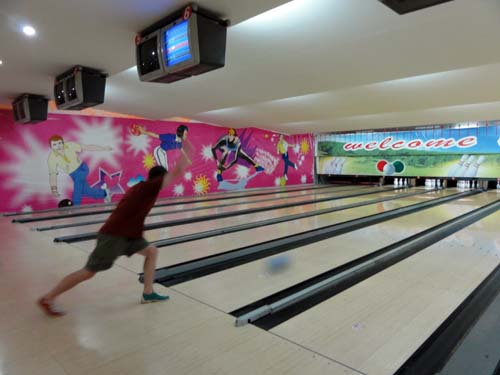
Joe bowling.
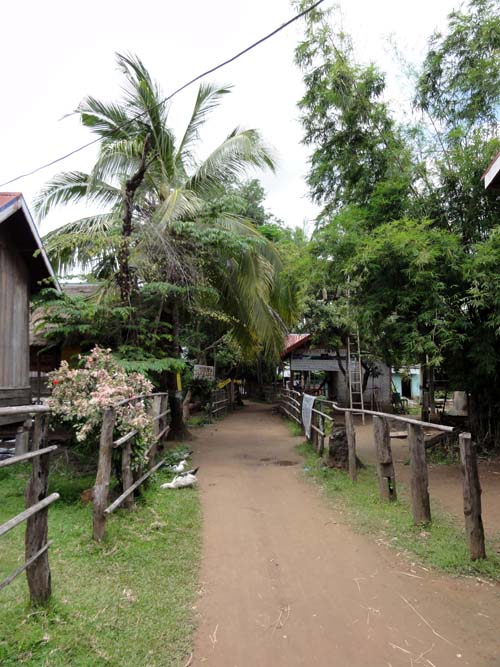
Road on Don Det.
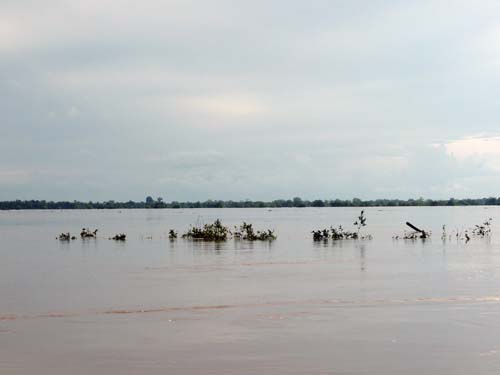
Huge Mekong. It actually goes past what you can see on the other side.
[ 5 comments ] ( 117 views )
Back Next

 Calendar
Calendar